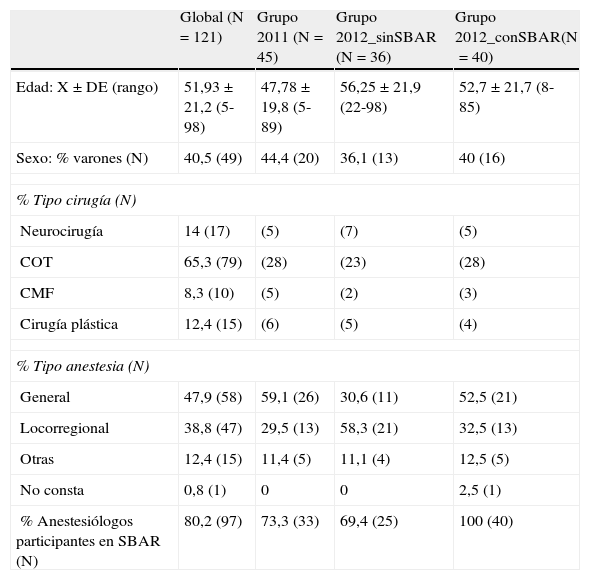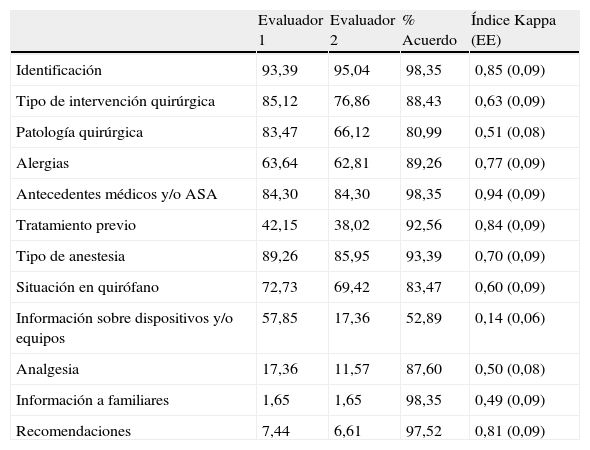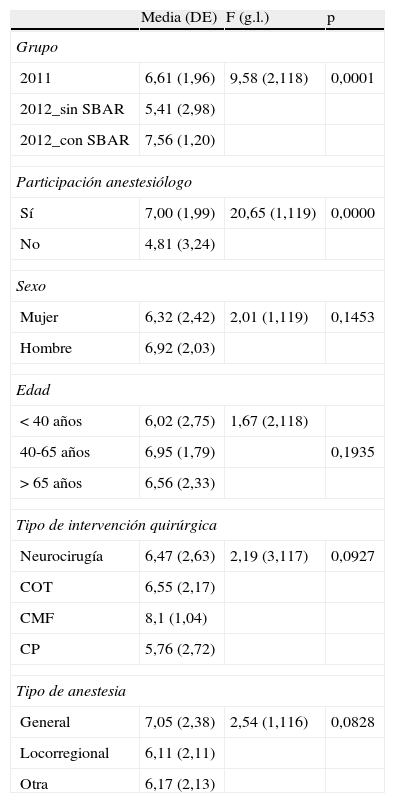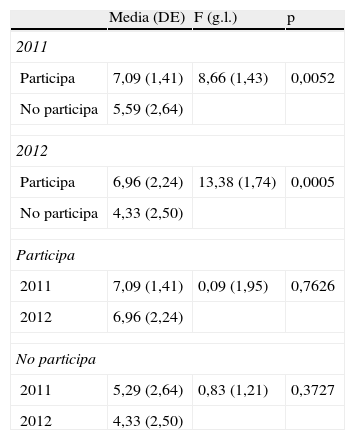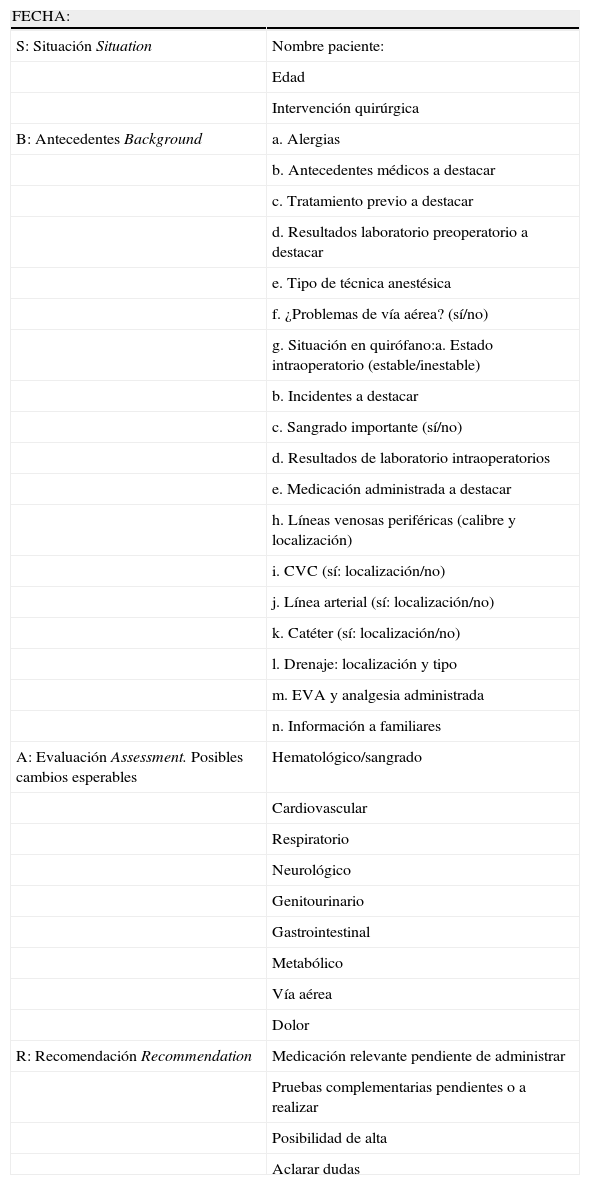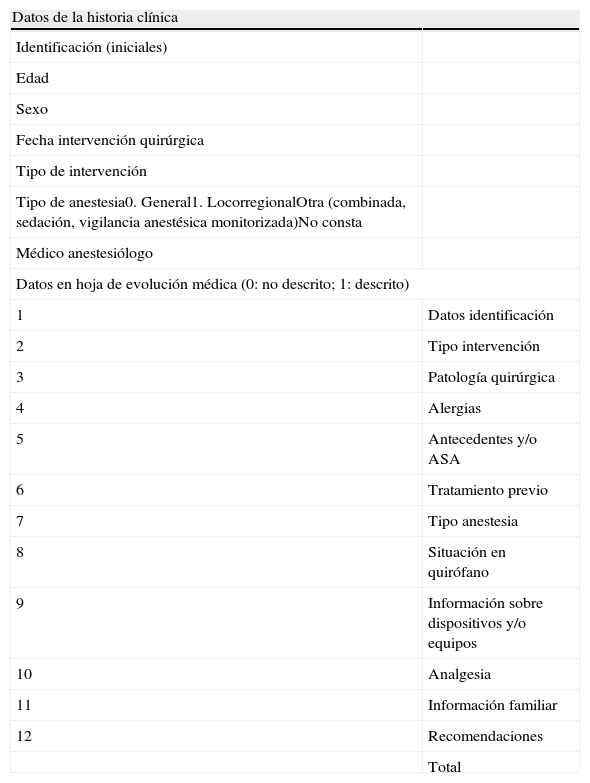La falta de comunicación es una de las principales causas de errores asistenciales, especialmente durante la transferencia de pacientes entre profesionales y/o unidades asistenciales; la normalización de la comunicación es una práctica recomendada. En nuestro estudio hemos querido valorar si la aplicación de la herramienta estructurada de comunicación SBAR podría influir sobre la calidad de la información escrita en la hoja de evolución por el anestesiólogo implicado en la transferencia del paciente posquirúrgico.
Material y métodosSe trata de un estudio observacional, retrospectivo, aleatorizado, de revisión de la calidad del registro escrito realizado por el médico anestesiólogo durante la transferencia de pacientes desde el área quirúrgica a la unidad de reanimación postoperatoria, mediante la aplicación de un listado validado. Se evaluaron 3 periodos de observación: un periodo control de 2 meses del año 2011 (preSBAR) y un segundo periodo de 2 meses en 2012 (postSBAR), en este último con 2 grupos de pacientes transferidos con (postSBAR+) o sin SBAR (postSBAR−).
ResultadosLa fuerza de concordancia entre los evaluadores obtuvo un coeficiente de correlación interclase de 0,8459 (p < 0,001). Existían diferencias significativas en función del grupo estudiado, con mayor puntuación media en el grupo con SBAR (grupo postSBAR+: media ± DE 7,56 ± 1,20 frente a grupo postSBAR−: 5,41 ± 2,98; p < 0,001) y en función de que el anestesiólogo responsable de la intervención participara en el estudio (media ± DE: 7,00 ± 1,99; frente a 4,81 ± 3,24 en los no participantes; p < 0,001).
The lack of communication is a major cause of health care errors, especially during patient transfer between practitioners and/or healthcare units, when standardization of communication is a recommended practice. In our study we wanted to assess whether the application of the structured communication SBAR tool could influence the quality of the information written on the progress sheet by the anesthesiologist involved in the transfer of the patient after surgery.
Material and methodsThis is an observational, retrospective, randomized, quality review of the written record made by the anesthesiologist during the transfer of patients from the surgical area to the postoperative recovery unit, by applying a validated list. We evaluated three observation periods: a control period of two months in 2011 (preSBAR) and a second period of two months in 2012 (postSBAR); in the latter two groups of patients were transferred (postSBAR +) or without SBAR (postSBAR−).
ResultsThe strength of agreement between raters obtained an intraclass correlation coefficient of 0.8459 (p <0.001). There were significant differences in the study group, with highest average score in the group with SBAR (postSBAR + group: mean ± SD 7.56 ± 1.20 versus postSBAR-group: 5.41 ± 2.98, p <0.001) and depending on the anesthesiologist responsible for the intervention participated in the study (mean ± SD: 7.00 ± 1.99, compared to 4.81 ± 3.24 in the non-participants, p <0.001).
ConclusionsThere was an improvement in the quality of written records made in 2012 during the implementation of the SBAR, without the actual application of this instrument appearing to influence it. The anesthesiologists that were involved in new forms of patient safety were also those who made written records of highest quality.
Artículo
Comprando el artículo el PDF del mismo podrá ser descargado
Precio 19,34 €
Comprar ahora






